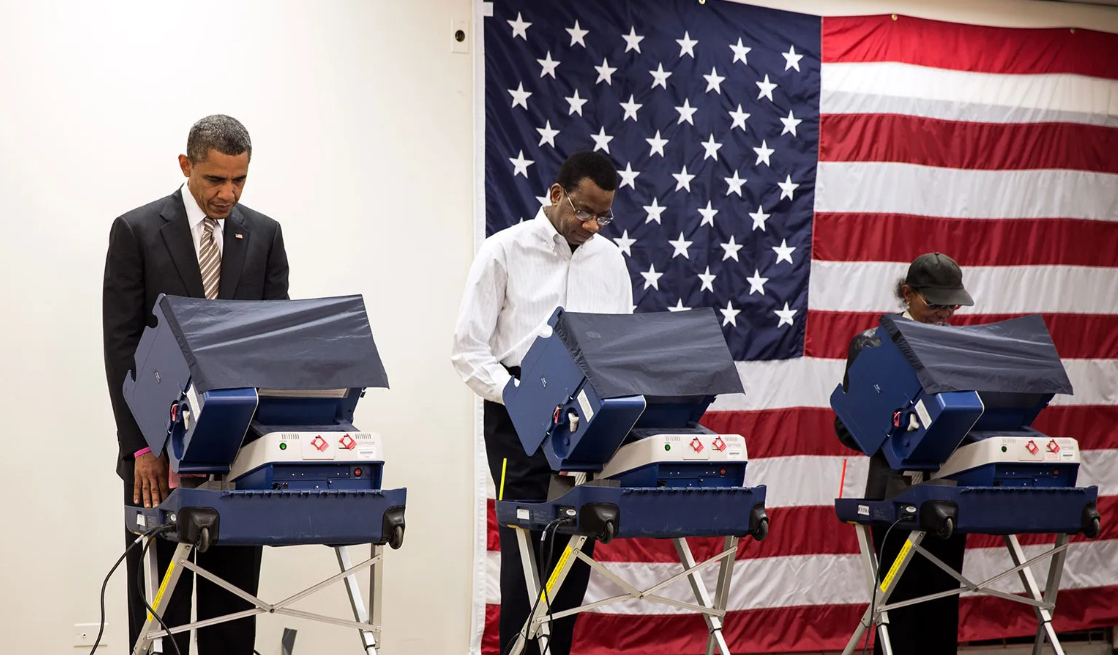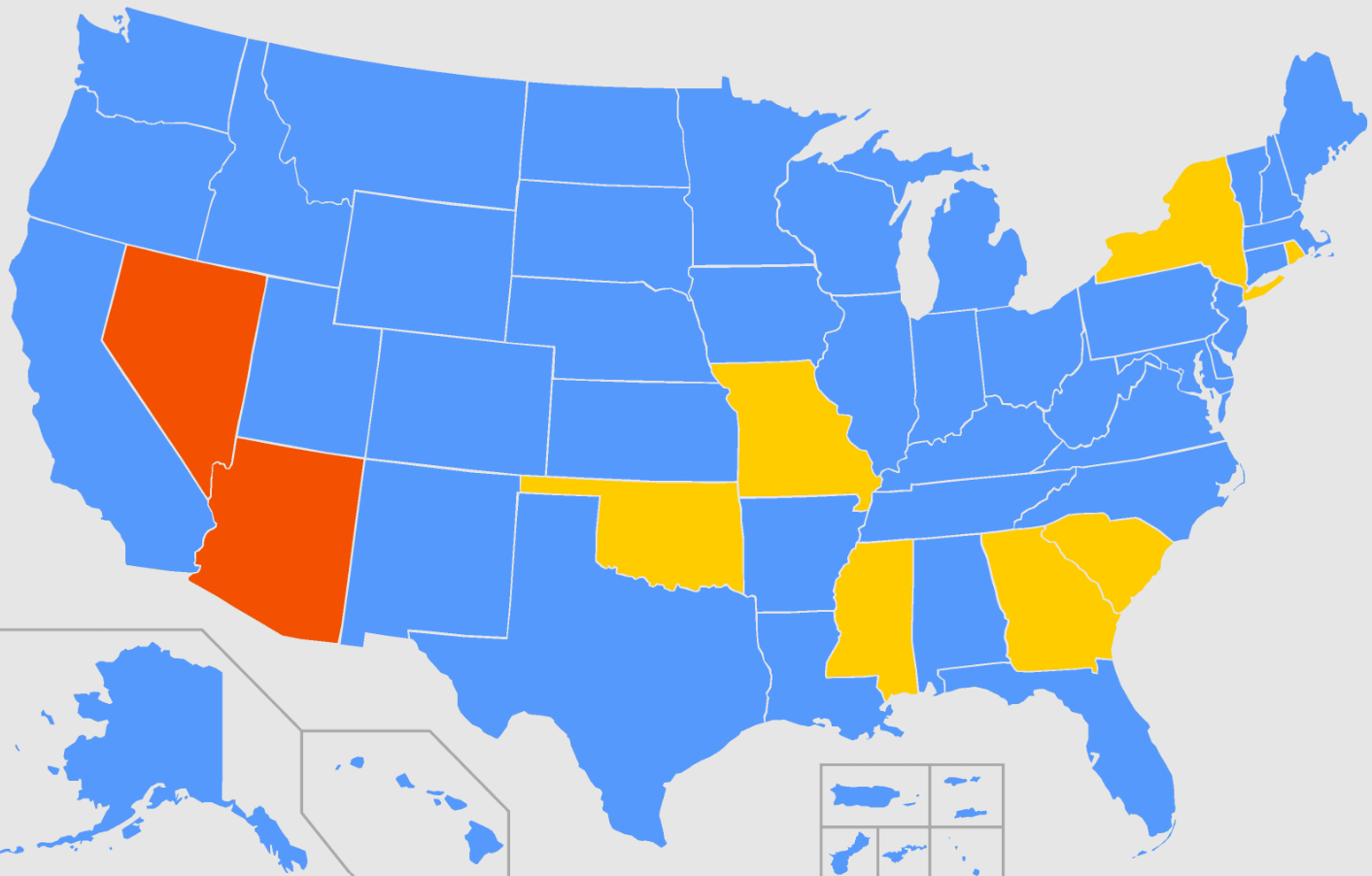2012 Democratic Party Presidential Primaries
The 2012 Democratic Party Presidential Primaries marked a significant event in the political landscape of America, featuring the incumbent President Barack Obama running unopposed. Following his historic election in 2008 as the first African American President, Obama sought re-election to continue advancing his policy agenda. In this election cycle, the Democratic Party didn’t host numerous primaries or caucuses as the President’s nomination was almost certain. However, several states held symbolic contests where voters could express their preference.
During the primaries, Obama faced minor opposition from a few candidates. Notably, anti-abortion activist Randall Terry and attorney John Wolfe Jr. gained a small number of delegates but couldn’t pose a substantial threat to Obama’s candidacy. The incumbent president’s campaign strategy focused on rallying his base and promoting his first-term accomplishments, such as the Affordable Care Act, the repeal of “Don’t Ask, Don’t Tell,” and the successful military operation that led to Osama bin Laden’s death.
In the end, President Obama, with his comprehensive approach towards domestic and foreign policies, proved to be an attractive candidate for his party. His message of hope and change continued to resonate with the Democratic electorate, and his administration’s notable achievements boosted his credibility. Therefore, he was able to secure the nomination without significant opposition.
While Obama’s nomination was expected, the 2012 Democratic Party Presidential Primaries still served a crucial role. They allowed the party to mobilize supporters, raise funds, and lay the groundwork for the general election. Democrats across the nation took this opportunity to voice their support for Obama and his policies, strengthening his position for the upcoming battle against the Republican nominee, Mitt Romney.
The nomination process concluded with the Democratic National Convention held in Charlotte, North Carolina. Here, Obama formally accepted his nomination and delivered a compelling speech outlining his vision for America’s future. The event served as a platform to unite the party and rally supporters for the November election. Ultimately, Obama’s strong campaign and his party’s united front played a significant role in his successful bid for a second term in the White House.
The 2012 Democratic Party Presidential Primaries demonstrated the power of incumbency and the importance of a united party. Despite minor opposition and economic challenges, Obama’s charisma, leadership, and policy achievements enabled him to secure his party’s nomination and ultimately win re-election. This event in American political history underscored the importance of cohesive messaging, strong leadership, and effective policy implementation in securing public support.
To sum up, the 2012 Democratic Party Presidential Primaries were a pivotal chapter in American politics, revealing the strength of an incumbent and the decisive power of a united party. It is a testament to the influence of effective leadership and competent policy execution in shaping the political destiny of a nation.

Overview of the Primary Race
The primary race is a pivotal process in the American political landscape, serving as the initial phase in the selection of candidates for public office. This process is conducted by political parties to determine their representatives for the general election. The primary race involves a series of contests, which include voting in a polling place, caucusing, or a combination of both. It is a crucial phase as it offers an opportunity for candidates to showcase their policies, ideologies, and leadership skills to the electorate.
The process is designed to be competitive, allowing for a broad range of choices for voters and encouraging candidates to engage directly with the public. The primary race tests the candidates’ ability to mobilize support, handle scrutiny, raise funds, and build a successful campaign. The outcomes of primary races can greatly influence the political narrative and set the tone for the general election. While the process may vary between states and parties, the aim is to ensure that the most favored candidate among party members advances to the general election. The primary race can often be a barometer of the nation’s political climate, reflecting popular sentiment and potential shifts in policy direction.
It is a fundamental aspect of America’s democratic process, serving as a critical platform for public participation in determining the country’s future leadership. Therefore, understanding the primary race is essential to grasp the dynamics of the American political system.
Performance Analysis of Losing Candidates
Performance analysis of losing candidates is a crucial aspect of any electoral process. It provides valuable insights into the strengths, weaknesses, and strategies employed during the campaign. However, the analysis must be carried out with an objective eye, with minimal bias or preconceived notions about the candidate’s abilities. This involves an in-depth examination of various elements such as campaign strategies, public interaction, message delivery, and overall public perception.
For instance, the candidate’s campaign strategies can be assessed by looking at their campaign management, their use of resources, and their approach to targeting different voter demographics. Similarly, the candidate’s ability to interact with the public and convey their message effectively can also provide key insights into their performance. Furthermore, public perception, which includes the candidate’s image, their relationship with the media, and the issues they stood for, can shed light on the reasons behind the candidate’s loss.
Additionally, it’s important to consider the overall political climate during the election. Factors like economic conditions, social issues, or global events can heavily influence voter behavior, and these can be beyond the control of any candidate. Hence, they must be factored into the analysis to provide a comprehensive understanding of the candidate’s performance.
An effective performance analysis of losing candidates can serve as a learning tool for future candidates. By understanding what didn’t work in previous campaigns, future candidates can avoid making similar mistakes and devise better strategies. Furthermore, it can help political parties reassess their policies, their public outreach methods, and their candidate selection process. In a broader sense, such analysis can also contribute to the overall improvement of the electoral process by identifying areas that need reform or enhancement. Thus, while the candidate may have lost the election, their performance analysis can yield valuable lessons for the betterment of future electoral contests.

Second-Place Finishers by State
Analyzing the statistics of second-place finishers by state can present an intriguing perspective on various competitions, ranging from sports to politics and everything in between. It’s essential to understand that although these contenders didn’t secure the top spot, their performance still bears significant impact. Second-place finishers often play crucial roles in shaping the dynamics of their respective fields, both locally and nationally. In politics, for instance, they can influence public opinion and policy direction through their platforms, even when they do not win the election.
In sports, second-place finishers can also demonstrate exceptional skill, with many instances of athletes narrowly missing the first-place position by just fractions of a second. These individuals often serve as inspirations and role models, embodying perseverance and the spirit of fair play. They may even be more popular or respected than the winners in certain circumstances due to their humility, sportsmanship, and resilience in the face of defeat.
On a broader scale, the analysis of second-place finishers by state can also reveal patterns and trends relevant to the socio-economic, cultural, and demographic aspects of different regions. For example, states with robust educational or sports programs might consistently produce high-ranking competitors across various fields. Conversely, states with fewer resources may struggle to reach the same level of achievement, highlighting potential areas for improvement or intervention.
In conclusion, second-place finishers by state is a topic that encompasses more than just the immediate results of a competition. It provides a deeper insight into the competitive landscape, individual and collective achievement, and the diverse factors contributing to success, making it a multi-faceted and fascinating area of study. While the first-place victor may take the spotlight, the importance and influence of those who finish second should never be underestimated.
Counties Won by Losing Candidates
In the world of politics and elections, there are instances where a candidate may not emerge victorious in the overall competition, but still manage to secure a win in certain counties. This occurrence is known as “Counties Won by Losing Candidates”. It is an intriguing aspect of the electoral process, illustrating the diverse perspectives and preferences among the population within a nation.
The phenomenon can be attributed to various factors such as the demographics, socio-economic conditions, and political inclinations of the inhabitants of these specific counties. Often, these areas may have unique challenges or concerns that align more closely with the policies and promises of the losing candidates. In the U.S. presidential elections, for example, this scenario is not uncommon. It is entirely possible for a candidate to lose the overall electoral vote, yet still win a substantial number of counties across the nation. This forms an integral part of the democratic process, highlighting the importance of every vote and every county in shaping the final outcome.
It also underscores the fact that the political landscape is not monolithic, but rather a tapestry of varied and often contrasting views. In conclusion, the concept of ‘Counties Won by Losing Candidates’ serves as an important reminder of the complexity and diversity of the electoral process. It underlines the fact that victory is not solely about winning the final race, but also about resonating with the distinct needs and aspirations of different sections of the electorate.
Candidates Who Withdrew During the Primaries
The political landscape during primary elections can be a tumultuous terrain where candidates with diverse ideologies and commitments vie for their party’s nomination. During this critical period, it is not uncommon for some candidates to withdraw from the race. The reasons behind these withdrawals can be multifaceted, ranging from lack of sufficient funding, unfavorable polling numbers, inability to gain traction with voters, or a strategic move to support another candidate with similar viewpoints. Occasionally, personal issues or health concerns may also necessitate a candidate’s departure from the campaign trail.
The decision to withdraw is often a difficult one, requiring careful contemplation and consideration of various factors, such as the potential impact on the candidate’s future political career and the repercussions on their supporters and campaign staff. Despite the disappointment that accompanies withdrawal, it also offers an opportunity for party consolidation and unity. It allows remaining candidates to reallocate resources and refocus their strategies, potentially strengthening their chances of securing the party’s nomination.
Moreover, the candidates who withdraw may continue to play a significant role in shaping the political discourse, endorsing other candidates, and mobilizing their supporters towards a unified goal. Thus, while candidates who withdraw during the primaries may exit the immediate electoral competition, they continue to have a profound influence on the political landscape.

Primary Calendar and Key Dates
The Primary Calendar is an essential aspect of the United States political system and refers to a schedule of state-by-state primary elections or caucuses. These key events, which typically commence in February and continue until June, herald the beginning of the electoral process, where the major political parties, including the Democrats and Republicans, select their presidential candidates. Each state has a distinct date for its primary or caucus, which is crucial because it influences the number of delegates a candidate can secure and, ultimately, the nomination. The first primary traditionally occurs in New Hampshire, followed by Iowa’s caucus, setting into motion a critical sequence of political events. Key dates also include the National Conventions, where the confirmed nominees accept their party’s nomination.
The final significant date on the primary calendar is the General Election in November, where the public casts their votes for the next President. Therefore, the primary calendar and its key dates play a pivotal role in shaping the political landscape of the United States, determining not only who will run for the presidency but also the future direction of the nation. It is essential for citizens, candidates, and political pundits to keep track of these dates to stay informed and involved in the democratic process.
